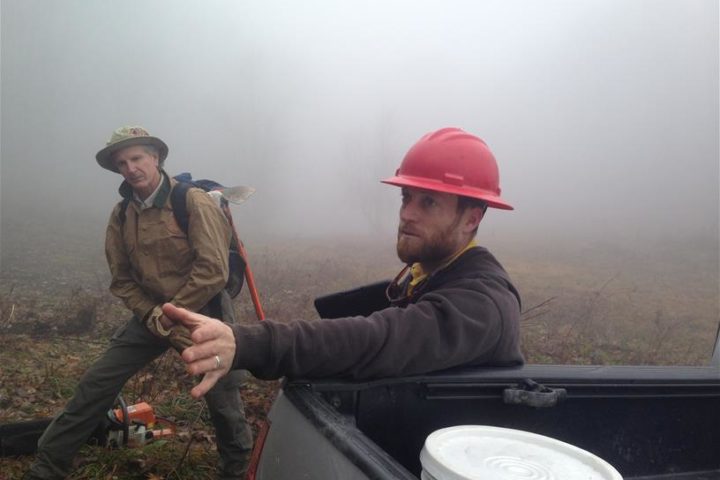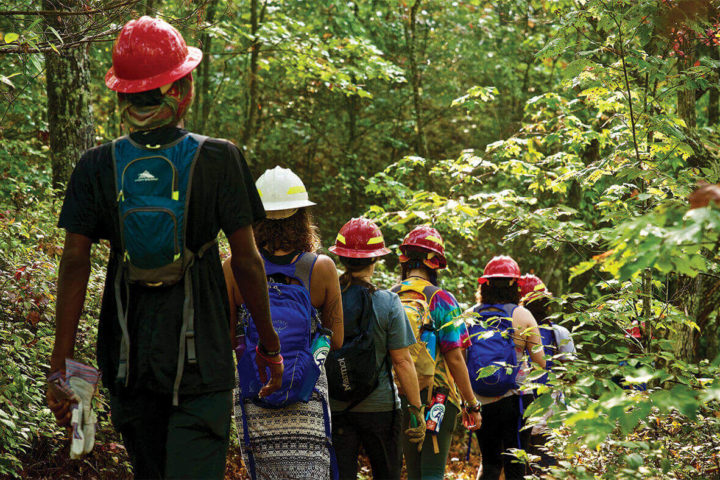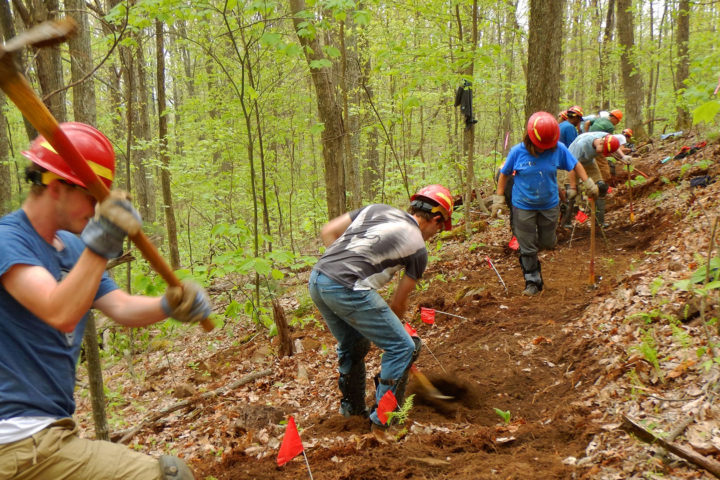by Leanna Joyner, ATC Senior Director of Partnerships and Trail Operations
2024 Safety Summary
Four A.T. volunteer injuries as a result of slips, trips, or falls were reported in Federal Fiscal Year 2024. The resulting injuries often required surgery. These injuries were primarily during the hike in or the hike out to the work site, so volunteer organizers are encouraged to continue to emphasize awareness for risks related to hiking as well as to the work project hazards.
During the height of summer, one volunteer weeding with a slingblade was severely stung by yellow jackets. Proximity to the trailhead for this volunteer was significant because it was a short return to the car to seek medical attention.
Two other near misses included smart responsiveness by crew leaders who removed the volunteers due to a pacemaker battery dying and early signs of heat illness, respectively.
Quick response by volunteers and trail supervisors when volunteer injuries or near misses occur is important so that A.T. volunteers receive good support from partners within the A.T. network. All field leaders of volunteers should carry a Volunteer Injury/Near Miss Packet; individual volunteer section maintainers should also keep a copy with them when they working on the Trail.
Discover More

Increase Your Skill Set
Safety & Training
Safety and training resources for A.T. volunteers, as well as for those interested in volunteering along the Appalachian Trail!

Learn More
Volunteer Orientation
An orientation for A.T. volunteers, as well as for those interested in volunteering along the Appalachian Trail!

GIVING BACK TO THE TRAIL
Volunteers: In Their Words
Maintaining and protecting all 2,194.3 miles of the Appalachian Trail (A.T.) is not easy work. Even so, thousands of volunteers spend countless hours each year doing just that — caring for the Trail, conserving its resources, and protecting its one-of-a-kind hiking experience.
